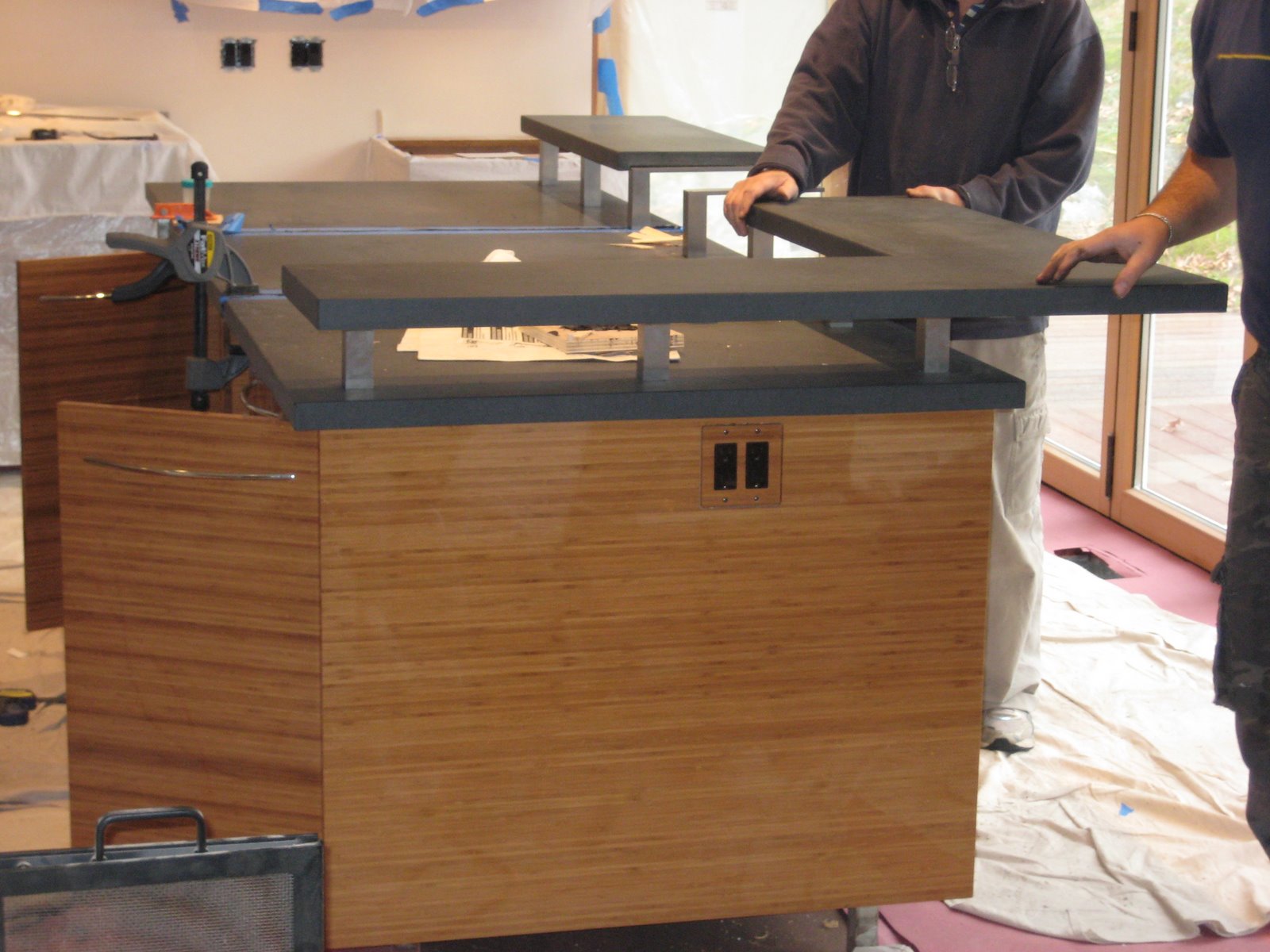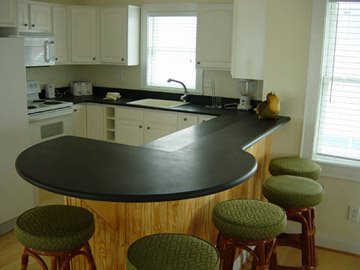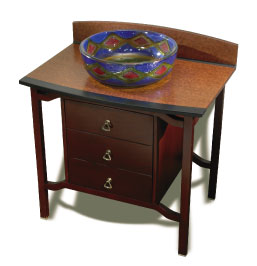Natural stone counters are inert for the most part, but quarrying and transporting them around the globe brings a host of environmental and human rights along for the ride.
Quartz counters are made from stone aggregates of questionable origins and a whole lotta petroleum. They are unrecyclable and don't biodegrade.
So what's left? It seems that everywhere I turn I find something non-renewable or non-sustainable when I go to specify a counter material.
Or maybe not. There are two products that have recently come to my attention as possible "green" substitutes for the counters that end up in most peoples homes now.
 The first is a product called Fireslate. Fireslate is made by a single manufacturer in East Wareham Massachusetts and has been around since the early years of the 20th century. Fireslate was developed originally as a fireproof lining for the undercarriages of cars but it makes for an interesting counter top. Fireslate is also what the counters in my High School chem lab were made from. I think that's what all chem lab counters were made from it now that I think about it. Anyhow, Fireslate is made from cement, sand and recycled paper and looks for all the world like soapstone. It's available in a few colors beyond black and gray and I predict that
The first is a product called Fireslate. Fireslate is made by a single manufacturer in East Wareham Massachusetts and has been around since the early years of the 20th century. Fireslate was developed originally as a fireproof lining for the undercarriages of cars but it makes for an interesting counter top. Fireslate is also what the counters in my High School chem lab were made from. I think that's what all chem lab counters were made from it now that I think about it. Anyhow, Fireslate is made from cement, sand and recycled paper and looks for all the world like soapstone. It's available in a few colors beyond black and gray and I predict that  it's appeal will grow in the coming years and that they won't be the only manufacturer of this material for long. In the meantime, their website isn't the most helpful thing out there and finding photos of a Fireslate counter is quite the task. It does seem to have a large following out there though. Fireslate is rock hard and needs to be treated with tung oil to keep it sealed. It does scratch and develop a patina in the same way that soapstone does and is water resistant enough that it can be used to make sinks. Interesting
it's appeal will grow in the coming years and that they won't be the only manufacturer of this material for long. In the meantime, their website isn't the most helpful thing out there and finding photos of a Fireslate counter is quite the task. It does seem to have a large following out there though. Fireslate is rock hard and needs to be treated with tung oil to keep it sealed. It does scratch and develop a patina in the same way that soapstone does and is water resistant enough that it can be used to make sinks. Interesting  stuff this Fireslate, I just wish the company behind it did a better job of telling me about their product.
stuff this Fireslate, I just wish the company behind it did a better job of telling me about their product.The second product I found is also made from sustainable wood pulp. Yes, these are counters made from paper essentially. Tacoma, Washington-based Richlite is the manufacturer that gets the most attention, and they have a pretty helpful website. Richlite is heavy, heat, scratch and bacteria-resistant. The counter to the left is a Richlite counter.

Another Washington-based company is making a sustainable and non-toxic product called Paperstone. Paperstone is made from post-consumer recycled paper and a resin derived from cashews. It's interesting stuff. To the right is a vanity top made from Paperstone.
So there are products out there that do take this environmental responsibility thing seriously. I think you'd do well to think about them at he very least if you're in the market for a new counter. Even if you're not, these three products are the leading edge of a something we'll be seeing more and more of in the coming years. And that my friends, is a very good thing.
How about wood? (Not for use next to sinks or stoves--though people do...)
ReplyDeleteI tend to shy away from specifying wooden counters for that very reason. I've used them as island tops or as integrated cutting boards, but placing them next to a heat source is madness. It takes a lot of work to get them to catch fire, but the exposure to high temperatures makes them look odd over time.
ReplyDelete